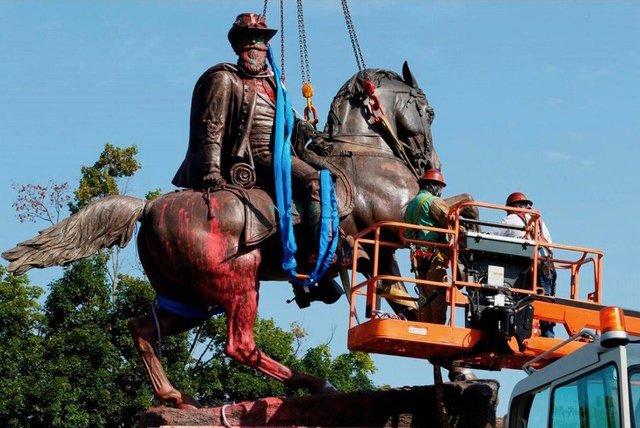Marriage and Other Monuments, a novel
I’m delighted to share that my next novel, Marriage and Other Monuments, will be published in February 2026!
In the summer of 2020, as social justice protests and the removal of Confederate monuments rock the city of Richmond, Virginia, the marriages of two estranged sisters also implode. This eventually brings them closer, while their husbands conspire in a racial reckoning their ancestors would never have dreamed of.
Marriage and Other Monuments tries to capture the way a general atmosphere of change and upheaval can affect the most personal decisions. And how secrets within a marriage erode trust. And that for couples to evolve they must be true to who they are both as individuals and as members of an imperfect society.
In the coming year, I’ll write more about the inspiration for this story: marriage, of course, but also Richmond, Virginia, a city I love, where my family and I lived for many years.
Wisdom from Seasoned Authors
Recently, I found myself reading an unpublished novel I wrote thirty years ago. Unlike other times when I had returned to it, I was now able to see it with fresh eyes.
As I consider whether to resurrect this old manuscript, it has led me to think about the changes that writers and our work go through over the span of a long career.
I find myself wondering whether other writers explore settings, characters, and themes in their fiction only to discover they’ve covered the same territory before. Or whether they sometimes find their early work bafflingly distant or even unrecognizable.
My discovery of a viable novel sitting in a drawer and the questions it raises has prompted me to ask several brilliant long-time authors if they’ve had similar experiences. I’m pleased to share with you some insights from Anne Bernays, Pamela Painter, Leslie Pietrzyk, and Steve Yarbrough.
Here’s a link to Writer Unboxed to read more.
Persistence Pays Off at Pangyrus
The best thing about being Fiction Editor of a small, feisty literary journal like Pangyrus is the people. I’m thrilled to have two brilliant writers as Associate Fiction Editors—Whitney Scharer and Kristin Bair O’Keeffe. I enjoy our meetings and learn from their insights into the stories we receive.
And man, have we been receiving a lot of stories! Our submission rate has gone way up and I’m thrilled that the stories coming our way are stronger than ever. Perhaps it’s because we were recently ranked #3 on the Fish 2025 List of online literary publications.
I also think we’re receiving more submissions because we invite writers whose work we’ve rejected to refine their language, tighten their storylines, and delve deeper into their characters, and then try us again. Sometimes, a writer must try us two, three, or four times before one of their stories is accepted. The relationship that builds with each exchange is part of the joy for both Pangyrus and the writer.
A non-profit organization called VIDA: Women In Literary Arts studies the percentages of women compared to men published annually in literary journals. No surprise: women have been woefully under-represented. Besides the prevalence of implicit bias, one additional reason for the disparity was that men tended to be more persistent when sending out their work. A woman might be rejected once or twice and never try that journal again. Men, on the other hand, seemed unfazed by rejection and continued to submit, until ultimately, they had a piece taken.
Persistence, needless to say, is the key to success in writing (and life). I know this all too well from my own experience. I had my first literary agent at age 27. Two children raised, three agents and four novels later, my “debut” was published at age 53. Now, a dozen years later, Marriage and Other Monuments will be my fifth published book. There’s nothing more satisfying than helping other writers succeed, except perhaps achieving success yourself.
Latest Book Recs
I just finished The Berlin Stories by Christopher Isherwood and the timing of my reading feels eerily prescient, as it’s set in 1930s Germany. The steady rise of fascism and the routine brutality that serves as the backdrop to the detailed character sketches is deeply sobering and disturbingly instructive for today.
I also recommend Adam Ross’s hefty coming-of-age novel,
Playworld. Set in 1980s New York, it tells the story of a child actor who, lacking much will of his own, is taken advantage of in various ways, including in a romantic relationship with a married woman and by a sadistic wrestling coach. The richness of detail from that era is a lot of fun, especially if you lived in New York at that time, as I did. The novel is brimming with life, though occasionally dull, but I came to care about Ross's unique young character.
Two cleverly written novels that have received much praise are also worth disappearing into: The Women, by Kristin Hannah and God of the Woods, by Liz Moore. As I listened to each, I felt the way I have at some Broadway plays: there’s a reason somethings are wildly popular. They're very well done.
The Women, about American nurses in Vietnam during the war, is extensively researched; God of the Woods, a whodunit set in the Adirondacks, toggles effortlessly between time frames and characters, building suspense expertly.



